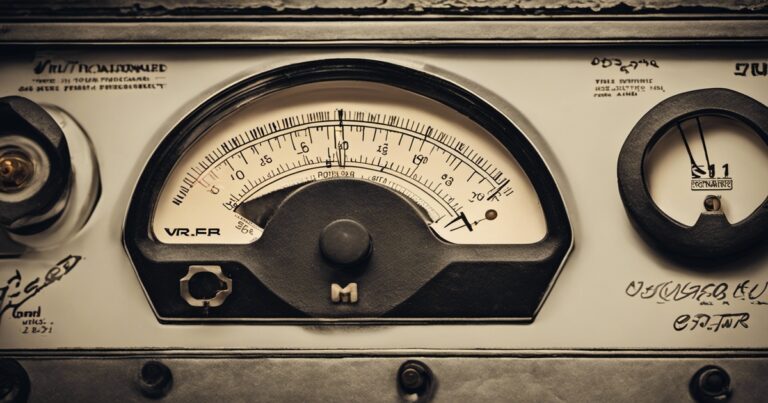An Optical Time Domain Reflectometer (OTDR) is a useful tool for analyzing and fixing fiber optic networks. It measures reflected light to collect data quickly, which helps with testing and maintenance. The OTDR can accurately measure things like optical loss, distance range, backscatter, and fiber attenuation. It works by sending pulses of light into the fiber and analyzing the reflection and backscatter signals. This gives us a detailed map of the fiber link, showing any issues like optical loss or backscatter. To understand how it works in practice, let’s look at an example.
Importance of OTDR in Fiber Network Troubleshooting
Fiber optic cables, with their high-power transmission capabilities, serve as the connector for modern communication networks. They efficiently carry vast amounts of data across long distances, minimizing backscatter and reflection. However, just like any other technology, fiber cables can experience faults, breaks, or losses that can disrupt network performance due to noise. This software provides an overview of the fiber cable’s performance. This is where an Optical Time Domain Reflectometer (OTDR) comes into play for backscatter and reflection trace on fiber cables.
Locating Faults and Issues
OTDR, or Optical Time Domain Reflectometer, is a powerful software tool that enables technicians to trace and locate faults, breaks, or losses in fiber optic cables. It uses a connector to send a pulse of light down the cable and measures the backscatter to accurately identify any issues. By emitting pulses of light into the optical fiber link and analyzing the reflected light, it can determine the exact location and magnitude of any reflection and backscatter issues affecting the network. This analysis is done by tracing the light through the cable.

Identifying Performance Issues
In addition to locating faults, an OTDR helps technicians trace and test the network to identify issues that may be impacting overall network performance. The OTDR provides an overview of the network’s backscatter, allowing technicians to pinpoint any potential problems. The power test measures parameters such as distance, loss, reflectivity, and reflection along the fiber link. This information allows technicians to trace the cable, pinpoint areas where attenuation or signal degradation may occur, and take appropriate corrective actions. It provides an overview of the reflection.
Maintaining Reliable Fiber Networks
Maintaining a reliable fiber network requires regular monitoring and troubleshooting, which includes cable tracing, testing, and reflection analysis. The OTDR cable plays a crucial role in this process by providing accurate measurements of fiber length, loss, reflection, and distance trace. These measurements help ensure that the actual fiber characteristics match the expected specifications for optimal performance during a cable test. This overview is essential to determine the distance covered by the cable.
Certifying Fiber Installations
When conducting a test to certify the performance of new fiber optic cables or extending existing ones, it is important to have an overview of the distance and use markers. OTDR, or Optical Time Domain Reflectometer, is commonly used to test the quality and integrity of each fiber run’s distance in a cable. It provides an overview and detailed information about the cable’s quality and integrity. Technicians can use these measurements to test the distance and format of the cable plant, ensuring compliance with industry standards and meeting required specifications. Here is an overview of how technicians can verify compliance.
Working Principle and Characteristics of an OTDR
An OTDR is a really important tool for fixing fiber networks. It helps find cable problems, measure pulse reflections, check the signal format, and see if there’s any loss in the network. It works by sending out pulses of light into the fiber cable and seeing how much light gets reflected back. The main job of an OTDR is to give information about things that happen along the cable, like connectors, splices, bends, or breaks. By looking at the reflections and scattering of light, an OTDR can figure out where there’s loss in the cable and how bad it is.
Dynamic Range
The dynamic range of an OTDR refers to its ability to detect signals with varying strengths, including both strong and weak signals. This is particularly important when testing cable systems, as it allows for accurate measurement of signal loss. A higher dynamic range means that it can accurately measure reflections from both near and far points in the cable network, reducing cable loss.
Pulse Width
Pulse width refers to the duration of each pulse of light emitted by the OTDR cable. This duration is crucial in measuring cable loss accurately. A shorter pulse width allows for better resolution when locating events along the fiber cable. This helps minimize signal loss.
Dead Zone
The dead zone is a short distance from where the cable pulse is launched where measurements may be inaccurate due to overlapping reflections and signal loss. A smaller dead zone indicates better measurement accuracy.
Resolution
Resolution refers to how closely spaced two events, such as cable loss, can be detected by an OTDR. A higher resolution enables more precise identification and localization of events along the fiber cable link, reducing the chances of loss.
Wavelength Compatibility
OTDRs are designed to work with specific wavelengths of light to measure cable loss. It’s important to ensure that your chosen OTDR is compatible with your network’s wavelength requirements and can accurately measure cable loss.
Understanding cable characteristics and loss will help you make informed decisions when selecting an appropriate OTDR for troubleshooting your fiber network.
Purpose and Usage of OTDR in Fiber Optics
An Optical Time Domain Reflectometer (OTDR) is a crucial tool for measuring cable loss in the world of fiber optics. Its primary purpose is to assess the quality, integrity, and loss of installed or repaired fiber optic cables. Let’s explore the various ways in which an OTDR is used to measure cable loss and why it plays such a vital role.
Assessing Signal Loss and Compliance with Standards
One of the key functions of an OTDR is to verify compliance with industry standards for signal loss budgets over specific distances. By sending out pulses of light into the fiber optic cable, the OTDR measures the amount of light reflected back at different points along its length, providing valuable information about loss. This information helps technicians identify any areas where signal loss may be occurring, allowing them to take corrective action.
Documenting Network Installations
In addition to assessing signal loss, an OTDR also aids in documenting network installations. It provides valuable information about the characteristics and performance of the fiber optic cables, including details such as length, attenuation, splice locations, and loss. This documentation is crucial for future reference, troubleshooting purposes, or when dealing with loss, making changes or expansions to the network.
Proof-of-Performance Reports
Another significant usage of an OTDR is providing proof-of-performance reports, which can help in identifying and measuring loss accurately. These reports offer evidence that the installed fiber optic cables meet specified requirements and perform as expected, with no loss reported. They can be shared with clients or stakeholders as a testament to the quality, reliability, and loss of the network infrastructure.

Understanding OTDR Traces and Data Formats
OTDR traces are graphical representations that display variations in backscattered light intensity along an optical fiber, providing insights into loss. These fiber traces provide valuable insights into the condition of the fiber and help identify any loss issues or anomalies. Let’s delve into the different aspects of OTDR traces, including loss, and data formats.
OTDR Trace Data Formats
There are several common data formats used for storing OTDR trace information, including loss. Some of these include:
- The Event Table Format (ETF) is a tabular representation of trace data that provides detailed information about events such as connectors, splices, reflections, and loss.
- Trace Format (TRC): TRC format stores the waveform data obtained from the OTDR measurement, allowing for further analysis and interpretation.
- SOR File Format (Standard Optical Report): SOR files provide a standardized way to store comprehensive information about an optical fiber link.
Analyzing Traces
Analyzing OTDR traces can reveal crucial information about various parameters related to the optical fiber link. Some key insights that can be obtained from trace analysis include:
- Attenuation Coefficients: By examining changes in signal strength along the fiber, attenuation coefficients can be determined, helping assess signal loss.
- Splice Losses: Traces can identify splice points where two fibers are joined together, enabling evaluation of losses at these connection points.
- Connector Reflections: Reflections at connector interfaces can be detected through trace analysis, aiding in identifying potential signal degradation.
Understanding these aspects allows network technicians and engineers to troubleshoot issues efficiently and ensure optimal performance of optical fiber networks.
Different Types of OTDR Instruments
OTDR (Optical Time Domain Reflectometer) instruments come in various types, each designed for specific testing needs. Let’s dive into the different types of OTDR instruments and their features.
Handheld/Portable
Handheld or portable OTDRs are compact devices that are ideal for field use. They offer high portability, making them easy to carry around during fiber optic installations or maintenance tasks. However, these instruments may have limited testing capabilities compared to larger benchtop models.
Pros:
- Portable and lightweight for on-the-go testing
- Suitable for quick troubleshooting and basic fiber characterization
- Easy to operate with user-friendly interfaces
Cons:
- Limited testing range and dynamic range compared to benchtop models
- May not provide advanced analysis features
- Smaller screen size may limit visibility of traces
Benchtop
Benchtop OTDRs are larger, more advanced instruments used primarily in labs or controlled environments. These devices offer comprehensive fiber testing capabilities with higher accuracy and precision.
Pros:
- Enhanced performance with improved dynamic range and resolution
- Advanced analysis features for detailed fiber characterization
- Larger display screens for better trace visibility
Cons:
- Less portable than handheld models
- Typically require external power sources
- Higher cost compared to handheld OTDRs
Modules/Plug-ins
Modules or plug-ins refer to OTDR components that can be integrated into other test equipment. These modules can be inserted into optical spectrum analyzers or fiber inspection scopes, expanding the functionality of these devices.

OTDR Testing Parameters and Setup Guide
To obtain accurate measurements with an OTDR, it is essential to understand the key testing parameters and proper setup. Let’s dive into these aspects to ensure successful testing.
Testing Parameters
When performing OTDR tests, several parameters need consideration:
- Pulse Width: The duration of the test pulse emitted by the OTDR affects measurement resolution. Shorter pulses provide higher resolution for detecting events but limit the measurement range.
- Averaging Time: This parameter determines how long the OTDR averages multiple measurements to reduce noise and improve measurement accuracy.
- Wavelength: Selecting the appropriate wavelength is crucial as it determines the sensitivity of the OTDR to different types of events in the fiber.
- Index of Refraction: To accurately measure distances, it is necessary to input the correct index of refraction value for the fiber being tested.
- Distance Range: The maximum distance that an OTDR can measure depends on its specifications and settings, such as pulse width and averaging time.
Proper Setup
Setting up an OTDR involves configuring various options based on specific requirements:
- Fiber Type: Different fiber types have varying characteristics, such as attenuation coefficient and dispersion properties. Selecting the correct fiber type ensures accurate measurements.
- Cable Length: Inputting the correct cable length enables precise distance measurements by compensating for signal loss over longer cables.
- Connectors: The presence of connectors in a fiber link affects measurement accuracy due to reflection losses at connection points. Consider using launch cables or cleaning connectors before testing.
- Expected Events: Understanding what events are likely to occur in a given fiber link helps optimize OTDR settings for better event detection and characterization.
By carefully configuring these parameters and considering specific setup requirements, you can maximize the performance of your OTDR tests and obtain reliable results.
Mastering the Essentials of OTDR
Great job! You’ve learned all the important stuff about OTDR. Now you know how it helps fix fiber network problems, how it works, and how to read the results. We also talked about the different types of OTDR and how to set them up. Now that you know all this, it’s time to use it. Whether you’re a network technician or want to work with fiber optics, knowing OTDR will make you better at finding and fixing issues in fiber networks. So grab your OTDR and become an expert in no time!
Frequently Asked Questions (FAQs)
What are some common applications of OTDR?
OTDR is commonly used for various applications such as installation and maintenance of optical fibers in telecommunications networks, troubleshooting network issues like breaks or bends in cables, assessing signal loss along fiber links, identifying faulty connectors or splices, characterizing overall link quality, and verifying compliance with industry standards.
Can I use any type of OTDR for all fiber optic networks?
No. Different types of optical fibers require different wavelengths for accurate testing. Single-mode fibers typically require 1310 nm or 1550 nm wavelengths while multimode fibers may need 850 nm or 1300 nm wavelengths. Therefore, it’s crucial to choose an OTDR instrument that supports the appropriate wavelength for your specific fiber network.






